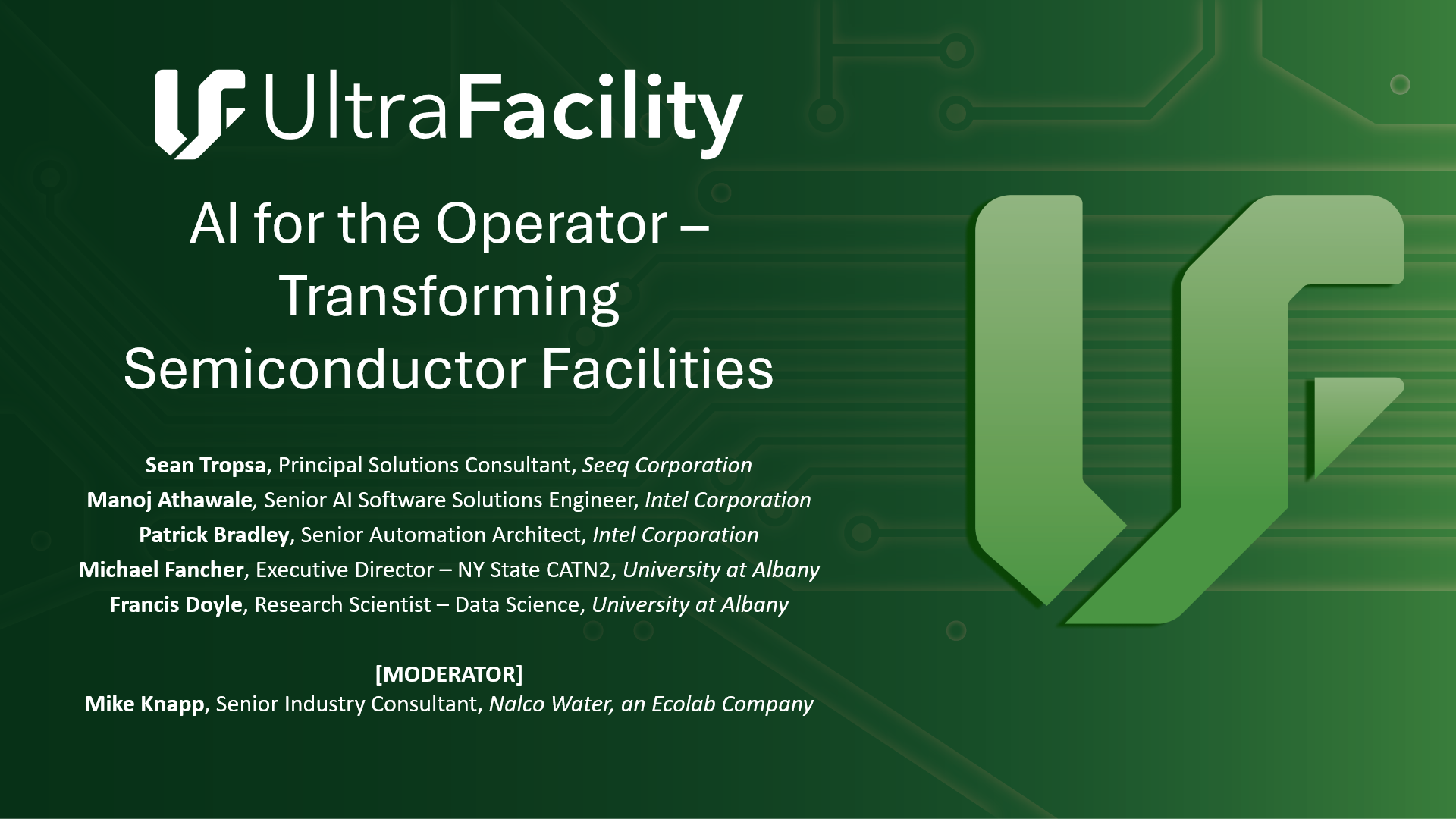Bringing facilities into the 21st century: The Shift to Digitized Operations
Share this insight
Dinesh Saigal, Technical Program Director at Applied Materials, develops IIoT and Industry 4.0 solutions for the semiconductor industry. He spoke to Ultrafacility about how AI is making a real impact at R&D and manufacturing facilities, and the practical steps that facility teams should take to make use of modern technologies.
What are the core areas where AI can support facilities?
If I were prioritising, I would start with efficiency. A lot of that ties back to predictive maintenance. Condition monitoring isn’t new, but AI has completely changed how we can do it. If you’re coming from a reactive maintenance world, condition monitoring is already a step up. But predictive maintenance tells you, based on that data, what will need attention in six months or a year. That’s what the facility teams we work with really need.
Take a process cooling water pump for example. It supports an entire section of the factory. The team wants to know when the motor will need to be replaced - what we call its remaining useful life. That gives them enough time to order a replacement and plan the downtime properly. We’ve already achieved that with vibration monitoring.
Which facility systems have the greatest potential for AI?
Rotating machinery has a lot of low-hanging fruit for AI. All the parameters are there, vibration, RPM, current, pressure. Then you have chemical delivery systems, as basic as gas cylinders running empty. Cooling towers are another area, how do you run them more efficiently? There’s a lot of opportunity for AI to optimize the way we operate them.
If you want a clean, simple use case for AI, start with heater jackets, which only have one parameter – temperature. It’s a single-parameter piece of equipment, but you might have 10,000 heaters in your facility, so the business case is huge. We’re putting a lot of AI effort just into understanding which heater is not functioning properly, where is it located, and can we fix it before it becomes an issue?
How does predictive maintenance work?
You need good IoT devices so the machinery can “talk” to you and report its health, then you bring all that intelligence to the edge, we call this conversational edge AI. Another area is tying this all to the ISA 95 model, which is sensor to cloud architecture, and how these systems communicate. In an ideal setup, a machine should be fully autonomous: it senses its own failure, generates a work order, then it creates a purchase order for the part it needs. That requires an ERP connection. It closes the loop.
If you push the idea further, the next step is physical AI, robots coming to fix the machine for you. That is a true ‘lights-out’ facility. I see that could happen faster than we think, although culture moves slower than technology and may delay adoption.
Have you seen Agentic AI commercially available for the semiconductor industry?
Most vendors offer horizontal AI platforms they pitch to every industry, oil and gas, retail, aerospace, healthcare. But semiconductors are a different beast. We need purpose-built tools that understand the needs and processes of our equipment. In principle, you could take standard LLMs from OpenAI, Microsoft, Google, and others, and then integrate them into your own facilities. But doing that effectively requires strong in-house expertise to build the solution rather than buying it.
I think purpose-built solutions are best. Take dry pumps on ALD and CVD chambers as an example. The industry is always talking about “cavity failures” in relation to wet pumps, but dry pumps, don’t suffer from cavity issues. Dry pump failures are corrosion, dirt, or condensation. So, you need AI for dry pumps, not for a generic water-supply pump.
Can AI be integrated into existing systems or does it need completely new infrastructure?
My view is that yes, you can put AI into existing infrastructure. But you’re also limiting your knowledge base, and AI depends on that. An LLM is just one part, the intelligence really comes from the data you feed it. When you look at cloud computing and modern architectures, you can exponentially increase that knowledge base. ChatGPT has the entire internet as its brain. In a factory, the AI’s “brain” is a user manual and a bit of machine data. Legacy SCADA systems can only do so much, and adding new features
can be expensive. Modern cloud-based platforms let you add features at relatively lower cost, with GPU horsepower behind them.
So, you can retrofit, but I would say it’s better to invest some money, upgrade your data collection architecture, and then you will be miles ahead of anyone trying to force modern AI into a 20th-century SCADA system.
Is data security going to be a major barrier to advancing AI in semiconductors, given how sensitive the industry is?
Data security is certainly a critical consideration, but with robust safeguards and industry collaboration, it is unlikely to become an insurmountable barrier to advancing AI in semiconductors.

